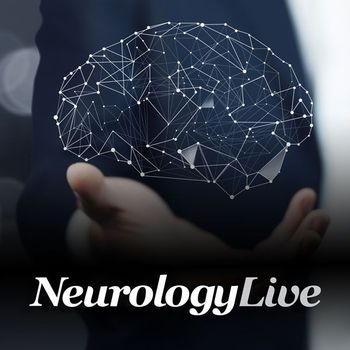
Using a diagnostic threshold of at least 1 paramagnetic rim lesion, MS was identified with a sensitivity of 80% and specificity of 88%, which increased to 95% after excluding patients with RIS and CIS.

Marco Meglio, Assistant Managing Editor for NeurologyLive, has been with the team since October 2019. Follow him on Twitter @marcomeglio1 or email him at [email protected]

Using a diagnostic threshold of at least 1 paramagnetic rim lesion, MS was identified with a sensitivity of 80% and specificity of 88%, which increased to 95% after excluding patients with RIS and CIS.

At the 12- and 24-week time points, patients in both diet groups demonstrated statistically significant differences in total cholesterol, low-density lipoprotein, body weight, and body mass index.

For patients who remained on 60-mg tolebrutinib through Part B of the study, the number of new Gadolinium-enhancing lesions and new/enlarging T2 lesions remained low.

There were no statistically significant differences in infusion-related reactions among patients with multiple sclerosis who tested positive or negative for treatment-emergent antidrug antibodies.

After 12 months of treatment, the 2 disease-modifying therapies were comparable in efficacy, with less treatment switching and discontinuation in cladribine-treated patients.

After Rapid LVO installation, CTA to groin puncture time decreased and 90-day clinical outcomes, expressed using modified Rankin Scale, were improved.

The assistant director of the Allegheny Headache Center provided context on a recently created headache registry and the need to prioritize treatment outcomes that matter to patients.

Investigators concluded that despite the linear relation between plasma concentration and dose, monitoring of fenfluramine is clinically relevant due to its high interpatient pharmacokinetic variability.

When adding Nerivio’s Guided Imagery, Education and Relaxation, or GIER, behavioral intervention, 79.4% of responders achieved consistent pain relief compared with 56.8% of those treated solely with the REN device.

The resubmission includes additional data from the phase 2 Study -019 and the pivotal phase 3 HARMONY study, which showed a significant 2.8-fold reduction in the risk of relapse of psychosis.

Imad Najm, MD, provided commentary on the long-term efforts needed to understand the origins of neurological brain diseases and his desire to copy the success of the cardiovascular field.

In contrast to general turning measures and the Scale for the Assessment and Rating of Ataxia score, lateral velocity change allowed detecting longitudinal changes in 1-year follow-up recordings.

Slightly over one-fourth of the surveyed cohort who were concerned about Alzheimer disease reported “some” or a “fair amount” of knowledge of aducanumab (Aduhelm; Biogen).

Investigators discovered a total of 23 metabolites that are associated with incident ischemic stroke in women, 4 of which were validated in independent cohorts.

Kristin Galetta, MD, MSEd, provided insight on differences between B-cell depleting disease-modifying therapies for MS and how they continue to shape the future of drug development.

Among participants with high sleep efficiency, those who received transcranial direct current stimulation benefitted more from language therapy than those who received sham, whereas those with low sleep efficiency demonstrated no additional benefit.

The Samuel W. Fordyce professor and director of Geriatric Psychiatry at the St Louis University School of Medicine provided insight on critical aspects of telehealth use for assessing and managing psychosis in patients with neurodegenerative diseases.

At week 10 of this interim analysis, treatment with high-dose ACI-35.030 showed no new safety signals and boosted median levels of antibodies reactive with pathological tau.

More than 30% of the lower dose tenecteplase group achieved major reperfusion without symptomatic intracranial hemorrhage at 24 to 48 hours after thrombolysis.

A greater proportion of those treated with EVT had modified Rankin Scale scores of 0-3 at 90 days and NIHSS improvements of at least 8 points or more at 48 hours, relative to standard medical therapy.

The phase 4 study will evaluate the efficacy and safety of once-monthly injectable galcanezumab compared with every-other-day rimegepant taken orally.

The artificial neural network demonstrated an area under the precision-recall curve of 0.92 with recall of 0.72 with precision of 0.39 during testing, all values that were greater than classic regression models.

After small studies suggested eptifibatide may be safe in acute ischemic stroke, new data showed similar rates of ICH between study drug and controls, but increased PH-2 for those treated with the antiplatelet.

Relative to pre-pandemic era, the odds of mortality in stroke-related admissions increased during the pandemic, with an even greater risk for those less than 70 years of age.

Almost 40% of the studies assess did not report racial or ethnic subgroup data. Geographically, there was a slight increase in the number of South American-based phase 3 DMT trials and almost little-to-no improvement in the phase 3 DMT studies based in Africa.

The director of Cleveland Clinic’s Epilepsy Center discussed the new Cleveland Clinic Brain Study, which will evaluate predisease fingerprints from patients who go on to develop neurological disorders.

Relative to other PD-related genetically associated groups, only those with LRRK2-associated PD demonstrated a significantly increased risk of stroke compared with controls.

In previous phase 1 settings, CY6463 has demonstrated an impact on biomarkers relevant to neurodegeneration and cognitive impairment.

This was the first study to demonstrate a preventive treatment signal in migraine when an approved oral CGRP receptor antagonist is dosed as needed for the acute treatment of migraine.

Frail people or those with lower cognitive reserve were the only variables that benefitted from higher doses, whereas APOE status and education had no significant interaction.